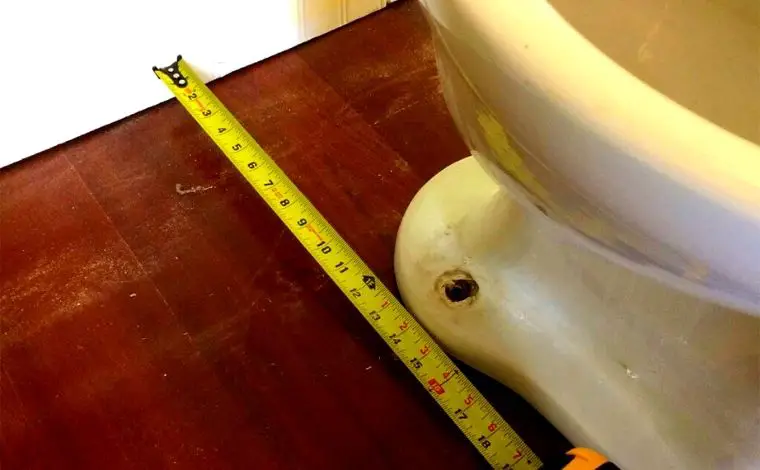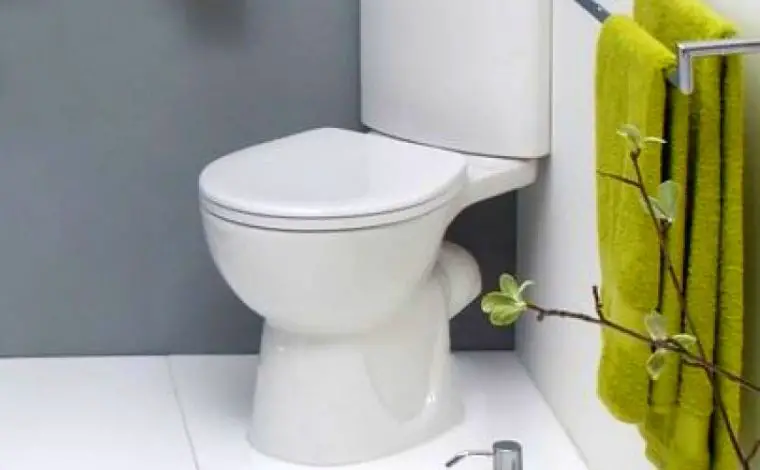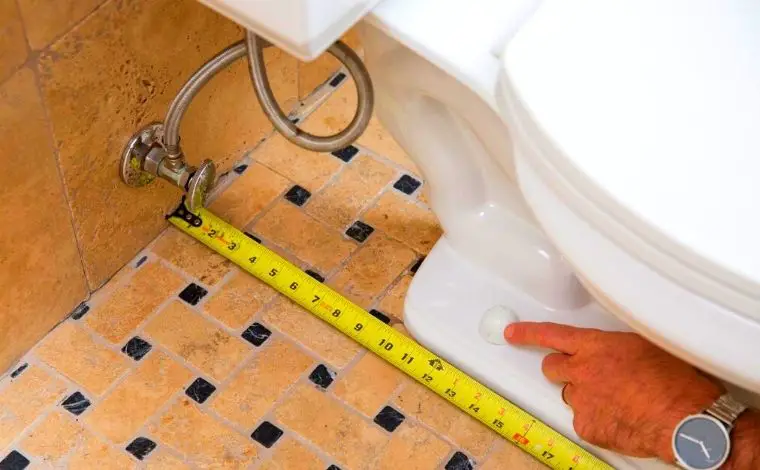Are you setting up a brand new bathroom or keen to renovate the entire washroom ambiance? Doing this without a proper toilet measurement can create a disaster for your bathroom. It doesn’t matter if you are finding a new one or remodeling the whole structure; you need to rely on a complete measurement package that is said to be rough in the toilet. It would be best to calculate different aspects of the toilet, like the front, back, rear, and many more. To clarify the knowledge about the rough-in, I will illustrate a detailed guideline and show you how to measure the rough-in correctly. So let things get started without any further delay.
What Is a Toilet Rough In?
Your toilet is the most valuable amenity that can change the entire landscape of your bathroom. Toilet rough in the exact measurement that you need to figure out that can make your toilet fit out ideally against the wall. If you measure correctly, then the gap between the wall and the tank may be minimal, and this gap is essential for the servicing and maintenance of the tank.
All this measurement is vital if your outlet pipe is situated beside the wall, but if your outlet is located in the middle, then there is no problem; in that case, you won’t need the rough-in measurement. The rough-in size is significant to get excellent toilet aesthetics.
Basic Toilet Rough-In Dimensions: 10 vs. 12 vs. 14 Inches
There are three basic dimensions of the rough-in that you need to follow to get the ideal placement of the toilet. Professional plumbers suggest almost three rough-in for the toilet; they are the standard dimensions of 10, 12, and 14 inches as the expected length. The basic dimensions are essential to knowing the ultimate space management.
| Features | 10-inch | 12-inch | 14-inch |
| Best Fit: | Round Bowl | Elongated bowl | Elongated bowl |
| Measurement: | 10 inches | 12 inches | 14 inches |
| Space required: | Small | Standard | Large |
| Versatility: | Limited | Wide range | Limited |
| Clogging Issue: | Common | Rare | Rare |
| Style: | Traditional | Modern | Specific |
| Installation: | Easy | Hard | Hard |
| Water Usage: | High | Low | High |
| Interchangeable: | Yes | No | No |
| Flushing System: | Poor | Powerful | Powerful |
| Utility bills: | Higher | Lower | High |
| Price: | Medium | Low | Medium |
10-Inch Rough-In Toilet
This measurement is ultimately the most extraordinary rough-in among the three, as here, the distance from the wall is less than any other rough in the system. This is the most cost-effective and inexpensive method to create the maximum space in your bathroom. Here you also need less pipe and less maintenance, which means less installation cost.
12-Inch Rough-In Toilet
A 12-inch rough-in is the most convenient and advantageous with respect to the other rough-ins. Though it gives less space in the bathroom, it is preferable to some of the plumbers as the distance between the wall and the toilet is standard here, and they are cheaper than the 10 inches rough in the toilet. You can also check the differences between 10 and 12-inch rough-in toilets here.
14-Inch Rough-In Toilet
This type of rough-in is not the most common of them all. This can only be found if you order them specially. If you need a bigger space between the tank and the wall, you can opt for this item. But there is the fact that this is not so budget-friendly; you need to spend a decent amount to get access to this kind of rough-in.
Regular Toilet Rough In Size
From the above discussion, we have gathered top-notch knowledge about the calculation of the rough-in. At this stage of the article, we will see how to measure the standard toilet rough in the bathroom. There are many types of toilets, like standard toilets, corner toilets, low-down toilets, commercial toilets, and many more. Here we will discuss the standard toilet rough-in system.
The first and foremost issue is to find the bolt screw attached to the ground. Then the task is to measure the distance between the bolt and the wall, and do not forget to use the plumber’s professional measuring tapes to get the utmost and correct outcome. Always avoid measuring from the baseboards or the molding, as this will make the calculation faulty. In case of this kind of irregularity, try to add the width of the baseboard to get an accurate measurement.
Corner Toilet Rough-In Size
Corner toilets are not the traditional type of flush toilets as they have a different type of installation process. In the case of measuring the rough-in for the corner toilet, you have to find out the bolt screw. Then find out the toilet flange so that you can calculate the accurate distance. Then investigate for the bolts which are situated on the floor. Now, you are ready to go. Start to measure from the center of the toilet flange to the adjacent wall. An effective way is to calculate from the flanges standing perpendicular and at 90-degree angles with the left and right corners of the wall. You can use a framing square where both straight lines coincide. That is the original rough-in size.
How to measure toilet rough-in size by yourself?
Toilet rough-in is a perfect solution for space management in the washroom. But what does the rough-in consist of? It would be best to clear all the confusion to acknowledge the rough system perfectly. Here are the standard toilet rough in management that you should know,
Determine the Toilet Flange’s Distance From the Wall
It is probably the most critical calculation for knowing the rough-in. Your toilet flange is simply the outlet pipe where all the clogs will pass from and fall into the sewage reservoir. It is wise to calculate the distance from the middle of the flange to the wall. If you measure from the base molding, then there might be a misconception in calculating the rough-in. Keep in mind that there are other types of rough, like the 10 and 14 inches. So calculate based on a 12-inch rough-in.
Measure From Left to Right Sidewalls
Rough-in is more or less the calculation of all sides of the dimension. We have seen the distance of the toilet from the wall, and now we are going to see the sidewall rough in measurements of the toilet. The standard rough-in of the sidewall is 15 inches from the center of the toilet. But if you have other bathtub or bathroom accessories, then the measurement should be slightly different; in that case, you have to exclude the dimension of that accessory. You need to setback both the left and right sides for about 15 inches each. 
Sufficient Space in Front of the Bowl
Rough-in decides all the dimensions and setbacks of the toilet from each side of that toilet. The gap in front of the toilet bowl is always an essential concern as it is related to our frontal vision. If you are under the International plumbing code, the minimum setback must be 21 inches, and if you are under the ordinary jurisdiction, you can follow a 24 inches space in front of the bowl to the obstruction. 
The emphasis on Cold Water Supply Line
The Coldwater supply line is the most significant installation for any bathroom. What will you do if you measure the wrong cold water supply installation line? According to the Experts, the perfect position for lining a cold water line is almost 6 inches from the center of the flange and 7 inches above the ground floor.
Final Overview
Toilet rough-in measurement is really a significant duty to get a perfect and aesthetic toilet, but this is not an easy task to perform. You need to follow an ideal guideline to find out the correct rough-in for your toilet; that’s why I have elaborated on this topic. Usually, there are three types of rough-ins which are 10, 12, and 14 inches, and the most common one is the 12 inches rough-in. As you are not going to replace or remodel your toilet daily, you have to be clear about the rough-in measurement. I hope you find this article helpful in understanding proper rough-in management; Now, there is only one thing to do: follow the guidelines and enjoy a blissful bathroom.
Hi, this is Robert Crossan, the owner of this website, has 17 years of experience in the installation, maintenance, and repair of toilets and plumbing systems. After completing the Level 2 Basic Plumbing course in 2005, I started working in both domestic and commercial buildings as a professional plumber. So I can figure out the core difference between different toilet models and brands. It also helped me monitor their work performance and setbacks.